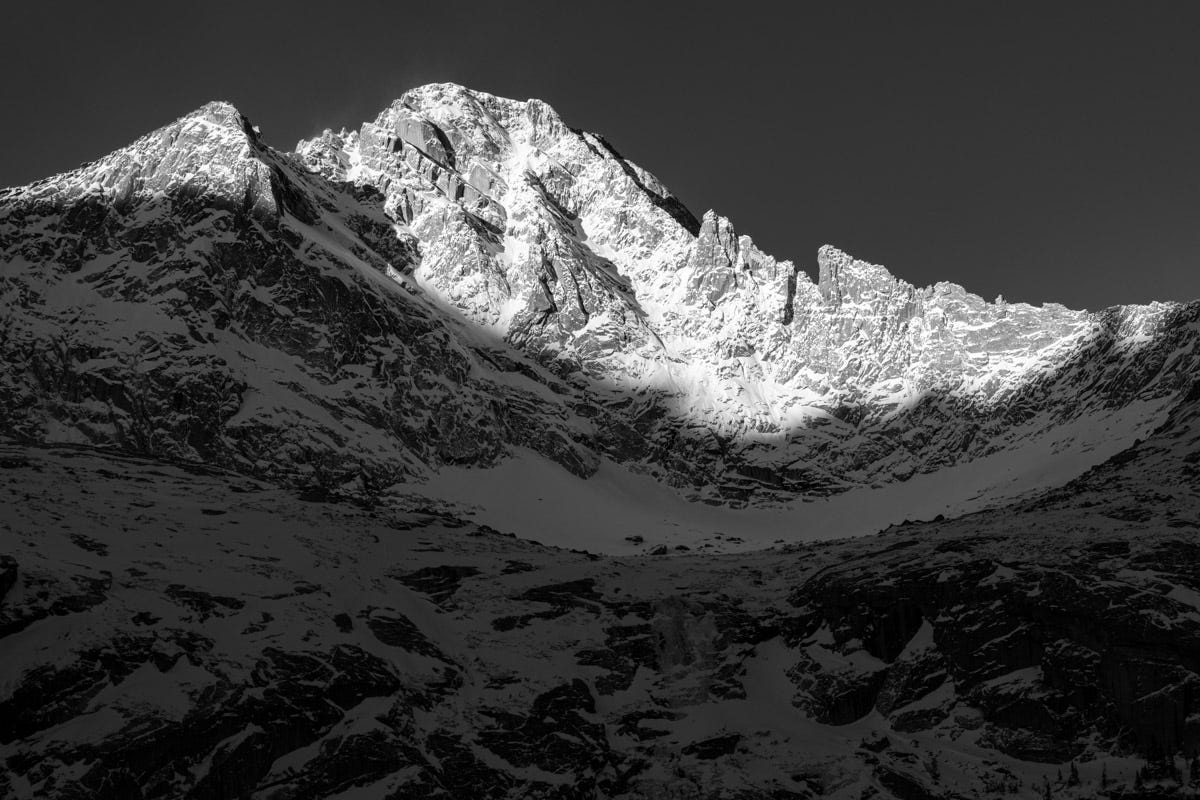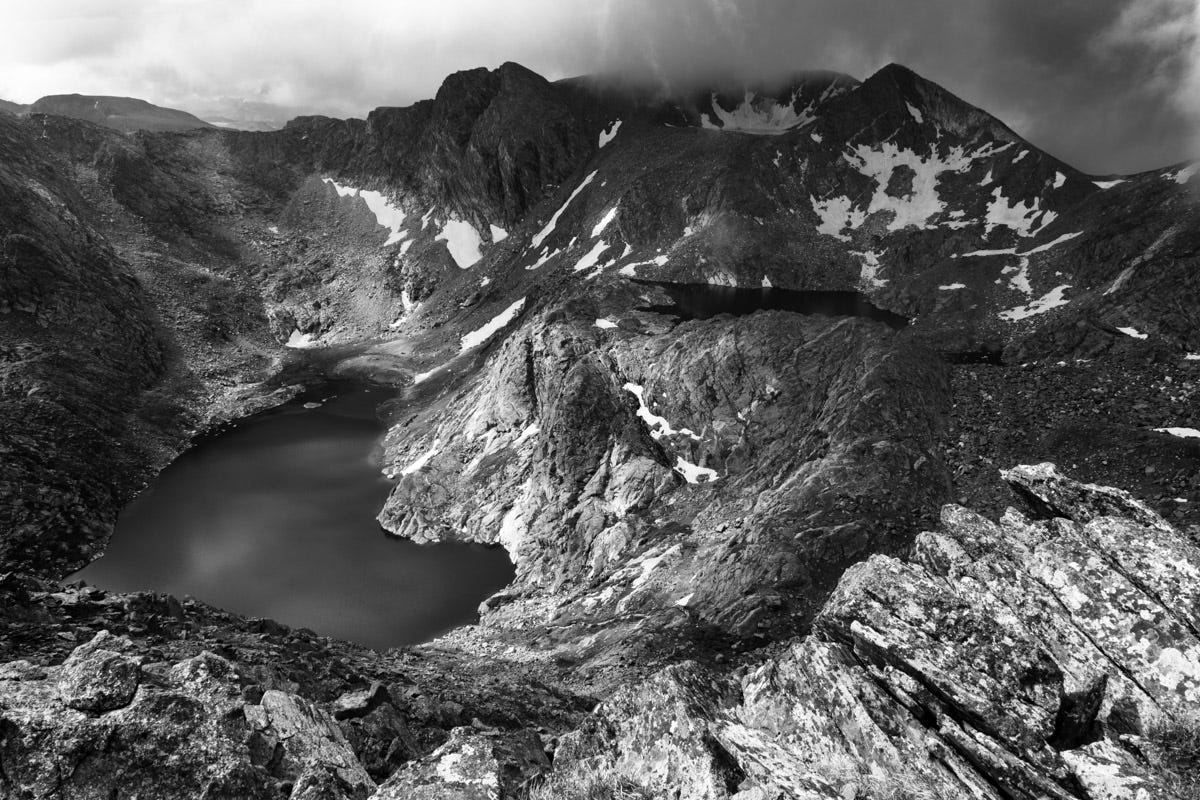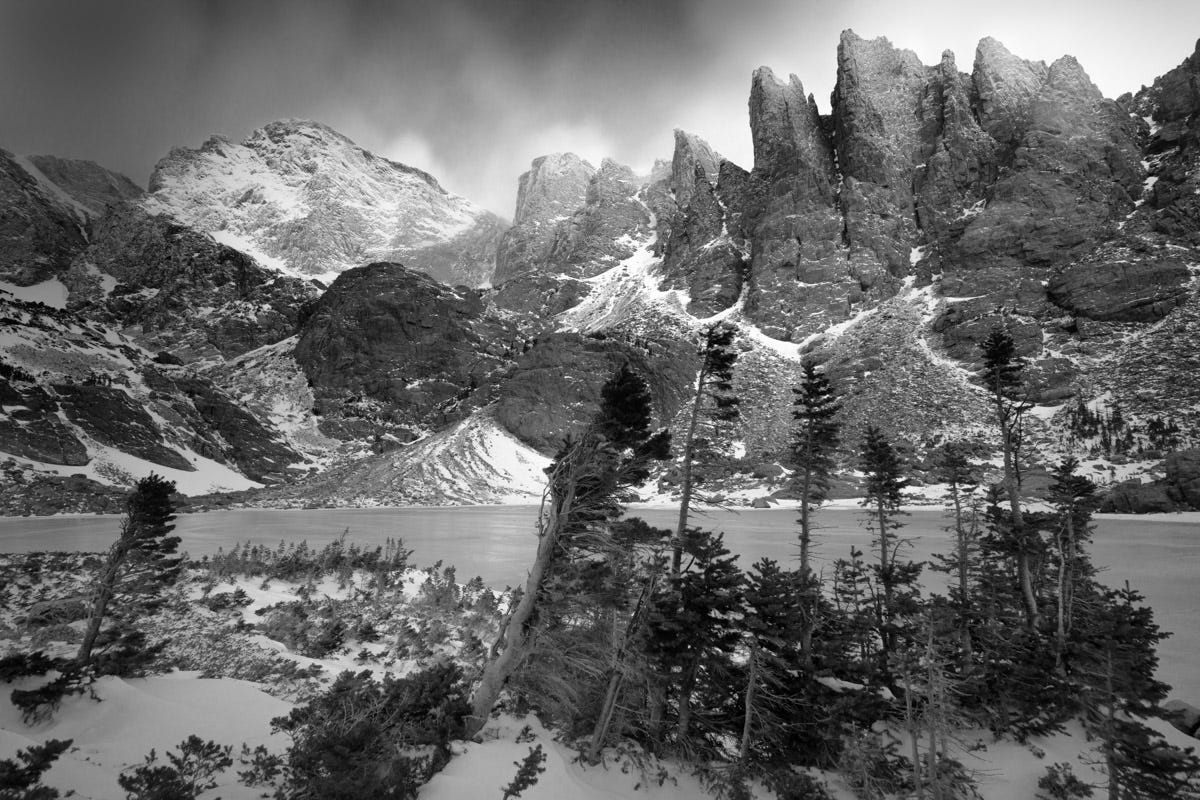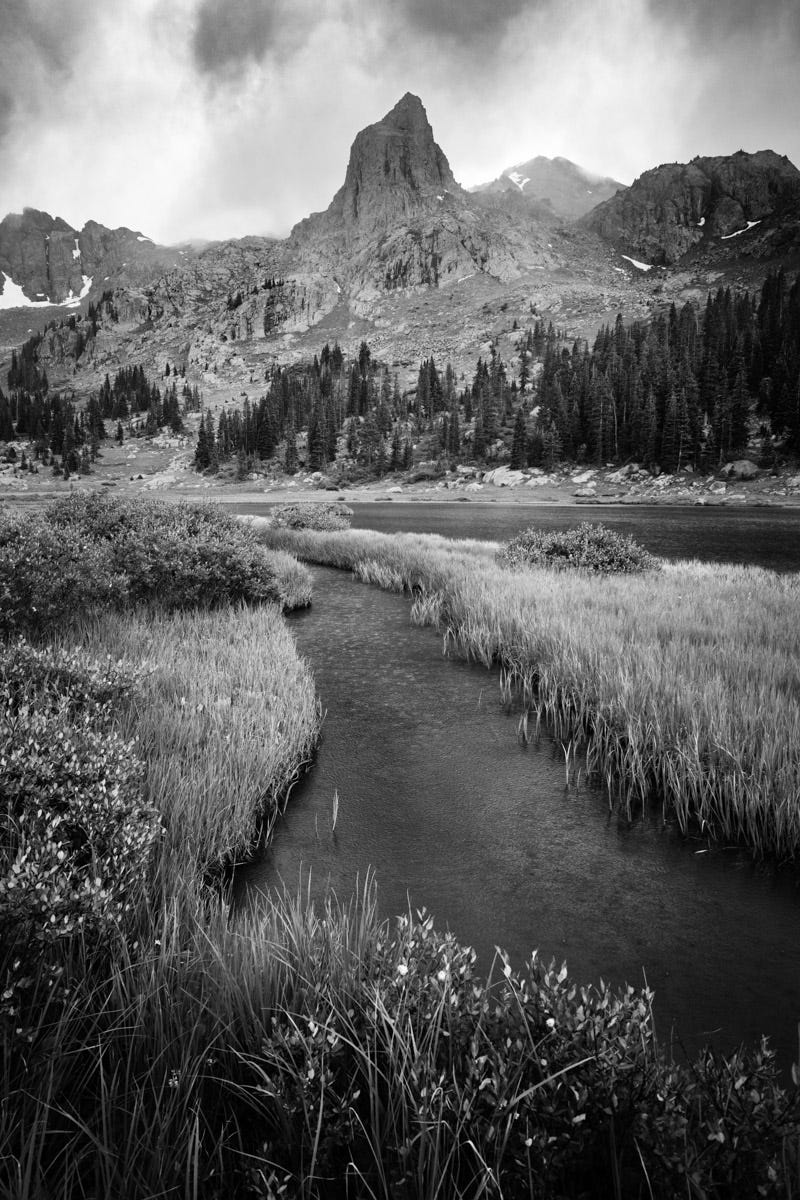A Ten-Year-Old Sees in Black-&-White
Everything I know about vision and black-&-white photography

I wonder if there are people who can see in color but not black-&-white. Everything would just be a color of some sort with shadows dark purple or blue and bright reflections would be yellow or orange. Everything would be a rainbow with no black or white ever. If there were people like that would they even know they were black-&-white blind? Or would their purple just be my black and they’re yellow be my white?
I think it’s interesting that some people can see some colors not others like green. I know they can memorize where stop light colors are, but what about when they go to a state like New Mexico where the stoplights are sideways? How do they tell then? I have a feeling that people who are truly colorblind only see in boring middle gray. Maybe they never really see the blackest of the black or the whitest of white. We’re all colorblind sometimes, like at night, only it’s too dark for us to notice.
I think it’s funny how people say that stupid people only see in black and white — no gray. If there are people like that it would be incredibly dangerous and they should have their heads examined. All you would be able to see is blobs of shapes. You couldn’t tell if a bad guy was coming at you from the shadows. You could be standing in the light and some guy would say “Hey!” and you’d be all looking around trying to find him because it would all just be black. You couldn’t see textures or be able to tell one thing from another unless they were complete opposites. How many things are actually complete opposites? I think all of the action is in the shades of gray. You don’t want to go too much one way or another.
I think it’s important to know that kind of stuff if you are colorblind or if you’re going to be a black-&-white photographer. I know about black-&-white photography, which is not really black-&-white but mostly gray. Black-&-white photographers always exaggerate, making the difference between black-&-white more dramatic and beautiful. I’m not sure I would mind being colorblind if the world looked like an Ansel Adams photograph. He is somebody that everyone should know about.
I know most photographers turn their cruddy color photographs into a black-&-white, because they don’t know anything else to do with it. Then they call it art. That’s dumb. I know there are certain scenes that need to be black-&-white instead of color like misty scenes, and really simple scenes, and scary scenes, and contrasty scenes (that means really bright and really dark — what you need to know about if you’re going to be a good photographer), and scenes with good light but nasty colors, and scenes where there’s no color anyway.
Only people who really know what they’re doing should call their black-&-white photography art. I think it’s important for everyone to know that if a color photograph doesn’t make an impressive black-&-white photograph, then the color one is probably cruddy anyway. What I mean is if the picture is only relying on bright colors and isn’t laid out nicely then it’s not really a good picture is it? I think people should know how to lay out a picture nicely before they worry if it’s color or black-&-white.
Here are some of my favorite black-&-white pictures and what I know about them.
See in this picture the mountain is way too dark and the patches on the rocks are way too bright compared to what someone who is colorblind would see, but it’s really beautiful as a picture. I don’t think it looks weird at all.
This is an impressive picture! It’s like a scene from Mordor. I think if a colorblind person saw this in real life everything would be more in the middle gray, but as a picture that would be really boring. A good photographer knows how to make the middle gray more black-&-white. But it’s bad to make anything completely black or completely white because that’s boring too. It’s hard to do that just in the middle and make it look good.
See this is what I mean by laying out a picture nicely. That big rock is right in the middle and the water makes lines up to it. All the grass is in the front. It makes me feel like I’m standing right there getting sucked up into the picture. I think this picture probably had boring colors, which is why it makes a great black-&-white.
See this is what I mean by simple scenes. You got a great big mountain and a big jumble of rocks and they all look kind of the same. This photographer is amazing to be able to make that great big mountain seem just like a jumble of rocks. Then you have some white snow and white clouds. That’s it. Simple. But I think in color it would be too easy to tell what everything is. In black-&-white it looks more mysterious and scary.
In conclusion (I know you always have to have a conclusion) black-&-white photography isn’t easy even though some people think it is. You should know what you’re talking about by reading articles like mine.
Note. This was not written by a 10-year-old. It was just written by me. As photographers and creatives, we know the importance of playing. But as writers we sometimes take everything oh so seriously, using big words to impress our audience and Grammarly to make everything saccharine and sterile.
But maybe some concepts are more readily understood by removing all the jargon and just saying it the way a kid would. Whether you liked this article or not doesn’t matter. Or even if you are angry that I tricked you. It served its purpose by allowing me to play both with my writing style and my understanding of black-and-white photography.
Click on “Follow” and “Subscribe” if you want to know each time I publish a new article.
I sell my images at creationimagesphotography.com.
For one of you “black-&-white” fans, I just printed and matted the four images from this article and am making the set available for only $99 (shipping included). They are signed and come with a description card. I accept credit cards, Venmo, Paypal, check, or cash. Just respond to this email, and we’ll work out the details. First come, first served.









